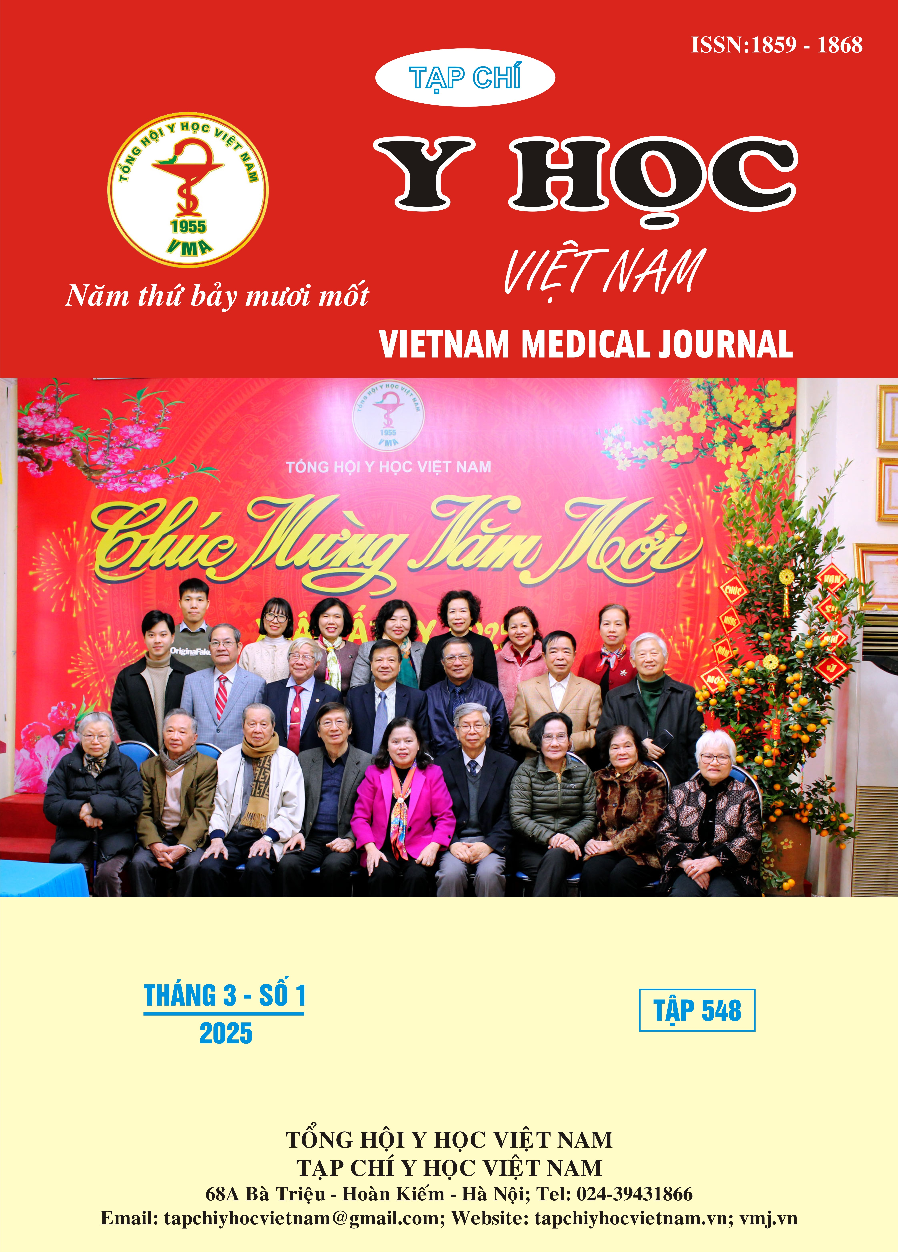CLINICAL CHARACTERISTICS AND TREATMENT RESULTS OF COMMUNITY-ACQUIRED PNEUMONIA IN CHILDREN AGED 2 TO 24 MONTHS WITH A HISTORY OF PREMATURITY AT CHILDREN’S HOSPITAL 1
Main Article Content
Abstract
Objective: To survey the prevalence of clinical, treatment outcomes, and complications in children aged 2 to under 24 months with a history of prematurity, hospitalized for community-acquired pneumonia (CAP) at Children’s Hospital 1. Materials and method: This is a prospective, cross-sectional, descriptive study with analysis of 120 cases of CAP requiring hospitalization, treated at the Respiratory and Infectious Diseases intensive care uinit of Children’s Hospital 1 from September 2023 to July 2024. Results: 120 cases met the inclusion criteria. The findings were as follows: Epidemiological characteristics: Gestational age <28 weeks was 10.0%, 28-32 weeks was 22.5%, and >32 weeks was 67.5%. Nutritional status with Overweight (3.2%), normal or mild malnutrition (76%), moderate malnutrition (10%), severe malnutrition (10.8%). Comorbidities: The most common was bronchopulmonary dysplasia (20%), followed by gastroesophageal reflux disease (17.1%) and asthma (11.4%). A significant proportion (52.5%) had a history of prior hospitalization for pneumonia. Clinical symptoms: Fever occurred in 35% within the first 24 hours of hospitalization. Most patients presented with tachypnea and chest retractions upon admission. Seizures were observed in 3.3% of cases, all of which were simple febrile seizures. Around 3.3% had SpO2 levels <90%, and 10.8% had SpO2 between 90% and 94%. Crackles were the most common lung sound (45.8%). Treatment outcomes and complications: 9 cases (7.5%) presented with very severe pneumonia at admission. Oxygen therapy via nasal cannula was initiated in 11 cases (9.2%), 3 of which required NCPAP after 24 hours, and 4 cases (3.3%) required mechanical ventilation due to severe respiratory failure. There were 3 deaths (2.5%). 59% of patients initially responded to Ceftriaxone or Cefotaxime. The median of treatment duration was 11 days. Three cases had prolonged severe pneumonia, with poor response to treatment due to underlying conditions. Conclusion: 59% of children aged 2 months to < 24 months with a history of preterm birth with community-acquired pneumonia respond initially to Ceftriaxone or Cefotaxime. Therefore, it is necessary to closely evaluate antibiotic resistance in this population to select appropriate antibiotics.
Article Details
References
2. Marcelo Comerlato Scotta, Fernanda Hammes Varela, Renato T. Stein. Pneumonia in Children. Kendig and Wilmott’s Disorders of the Respiratory Tract in Children. 10th ed. Elsevier; 2023:427-439.
3. Pryhuber GS. Postnatal Infections and Immunology Affecting Chronic Lung Disease of Prematurity. Clinics in Perinatology. 2015;42(4): 697-718. doi:10.1016/j.clp.2015.08.002
4. William J Barson. Community-acquired pneumonia in children: Clinical features and diagnosis. UpToDate website. Updated: August 27, 2024. August 30,2024.
5. Trần Anh Tuấn. Viêm Phổi Cộng Đồng ở Trẻ Em. Nguyễn Thanh Hùng, Ed. Phác Đồ Điều Trị Nhi Khoa Bệnh Viện Nhi Đồng 1. Nhà Xuất Bản Y Học;2020:682-688. 9th ed.
6. Liacouras CA. Community-Acquired Pneumonia, Nelson Textbook of Pediatrics. In: Nelson Textbook of Pediatrics. Elsevier; 2024:1240-1240.e1. doi: 10.1016/ B978-1-4377-0755-7.00297-9
7. Lê Minh Quí. Tác nhân vi sinh và các yếu tố liên quan đến độ nặng của viêm phổi mắc phải cộng đồng ở trẻ từ 2 tháng đến 59 tháng tuổi. Luận văn chuyên khoa cấp II. Đại học Y Dược TP.HCM.2020.
8. Lê Bình Bảo Tịnh. Đánh giá đáp ứng với kháng sinh trị liệu trong điều trị viêm phổi cộng đồng trên bệnh nhi 2-59 tháng tuổi tại khoa hô hấp bệnh viện Nhi đồng 1. Luận văn chuyên khoa cấp II. ĐH Y Dược TP.HCM.


